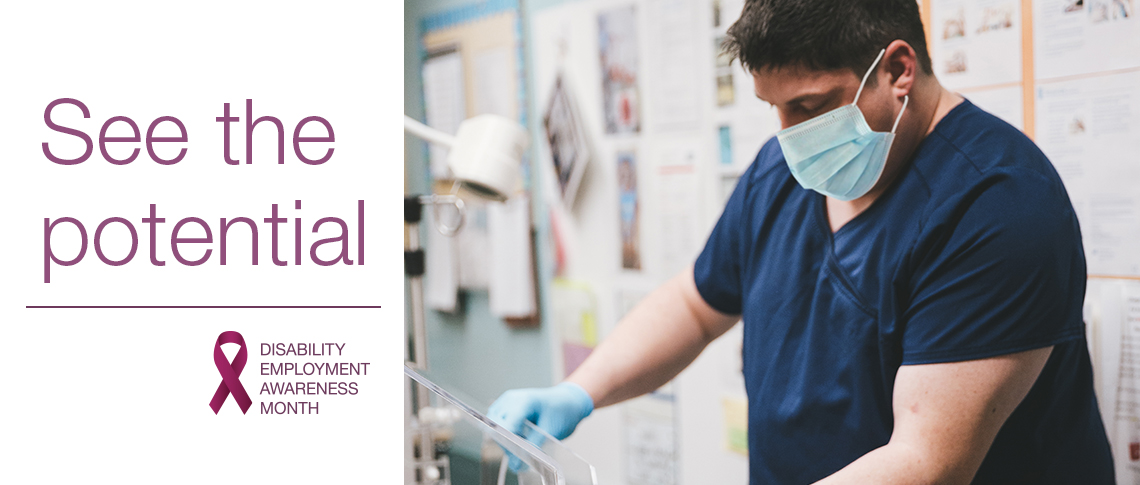

One of the most difficult barriers that people with disabilities face is stigma,” said Cal Schuler of Calgary Alternative Employment Services.
International Day of Persons with Disabilities (IDPD) turns our awareness to the people among us who live with disabilities, both visible and invisible disabilities, such as cognitive or learning disabilities, health conditions, or mental illness. The myths, misperceptions, and stigma around disability often cause people to make unfair and untrue assumptions about people with disabilities.
“People look at a person with Cerebral Palsy and assume they also have a cognitive disability,” said Schuler.
We have continued to progress since 2018, when the Government of Alberta issued a formal Provincial Proclamation to recognize Disability Employment Awareness Month (DEAM) in October to acknowledge the many ways people with disabilities contribute to the workforce, and to promote employment inclusion for persons with disabilities.
Another perception is that it is difficult or expensive to accommodate a person’s disability in the workplace, which may not be the case. For example, one employee at Alberta Health Services (AHS) on the autism spectrum requires no accommodations in order to be a fully contributing member of the team.
Workplace accommodations may come in the form of either compensating for or adapting to a disability.
In 2018 we reported that 30% of workplace accommodations come at no additional cost, by 2022 that number has grown to 58%, according to Job Accommodation Network. This can include flexible work arrangements, working from home, or working off-site. Workplace computers can be set to high contrast displays for the people who need them, an accessibility feature that comes standard with many computers.
Someone who has limited manual dexterity may use a tracking ball instead of a computer mouse, or someone with vision loss may use computer applications to enable their work. These may be quite inexpensive or limited to a one-time cost. Employers can also find government funding to support the necessary accommodation.
AHS’ work to grow and enhance diversity and inclusion includes creating opportunities for people with disabilities. Some actions the organization has taken include reviewing policies and practices to promote greater inclusivity, providing diversity and inclusion training to leaders and staff, and partnering with community organizations dedicated to helping people with disabilities find employment.
One such partner is the Gateway Association, an Edmonton-based organization that works to empower people with disabilities to find meaningful work.
“It takes time, but it’s really about fit,” said Renate Burwash, Director, Diversity and Inclusion Consulting at Gateway Association. “We don’t just place people for the sake of placing people, we work to ensure it’s a match for both the person and the organization – to set both parties up for success.”
In addition to Human Resources, AHS' Addiction and Mental Health department has a supported employment program.
“Inclusive hiring is critically important because it’s the best way to strengthen organizations, raise intelligence quotients for teams, and futureproof organizations,” says Kylie Dwyer, Senior Advisor at AHS with Talent Acquisition’s Diversity and Inclusion team. “Disabled people are here and we are ready, willing and able to work in these positions.”
*Job Accommodation Network, 2014, 2022.